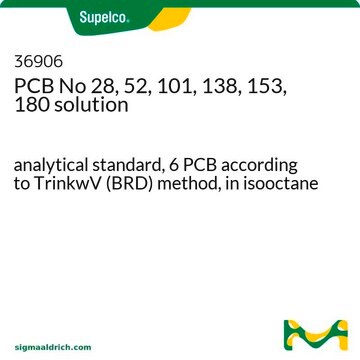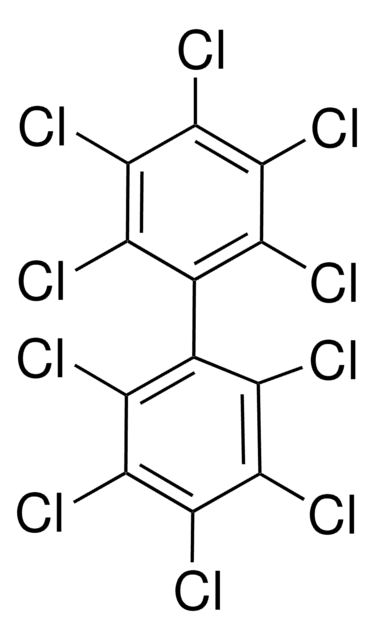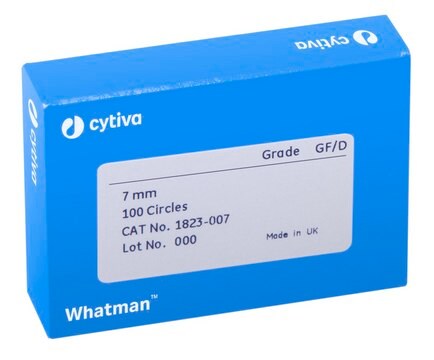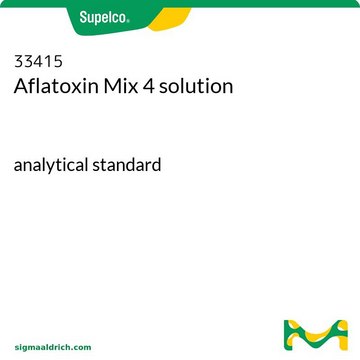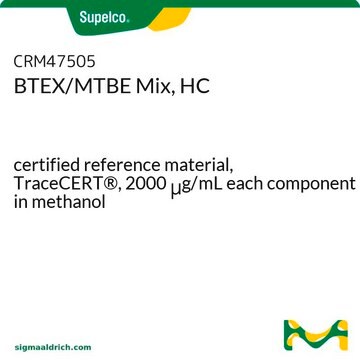36903
PCB No 138 solution
10 μg/mL in isooctane, analytical standard
Sinónimos:
2,2′,3,4,4′,5′-Hexachlorobiphenyl solution, 2,2′,3,4,4′,5′-PCB
About This Item
Productos recomendados
grade
analytical standard
Quality Level
shelf life
limited shelf life, expiry date on the label
concentration
10 μg/mL in isooctane
technique(s)
HPLC: suitable
gas chromatography (GC): suitable
application(s)
environmental
format
single component solution
storage temp.
2-8°C
SMILES string
Clc1ccc(c(Cl)c1Cl)-c2cc(Cl)c(Cl)cc2Cl
InChI
1S/C12H4Cl6/c13-7-2-1-5(11(17)12(7)18)6-3-9(15)10(16)4-8(6)14/h1-4H
InChI key
RPUMZMSNLZHIGZ-UHFFFAOYSA-N
Application
signalword
Danger
hcodes
Hazard Classifications
Aquatic Acute 1 - Aquatic Chronic 1 - Asp. Tox. 1 - Flam. Liq. 2 - Skin Irrit. 2 - STOT SE 3
target_organs
Central nervous system
Storage Class
3 - Flammable liquids
wgk_germany
WGK 2
flash_point_f
10.4 °F - closed cup
flash_point_c
-12 °C - closed cup
ppe
Eyeshields, Faceshields, Gloves, type ABEK (EN14387) respirator filter
Elija entre una de las versiones más recientes:
Certificados de análisis (COA)
¿No ve la versión correcta?
Si necesita una versión concreta, puede buscar un certificado específico por el número de lote.
¿Ya tiene este producto?
Encuentre la documentación para los productos que ha comprado recientemente en la Biblioteca de documentos.
Nuestro equipo de científicos tiene experiencia en todas las áreas de investigación: Ciencias de la vida, Ciencia de los materiales, Síntesis química, Cromatografía, Analítica y muchas otras.
Póngase en contacto con el Servicio técnico